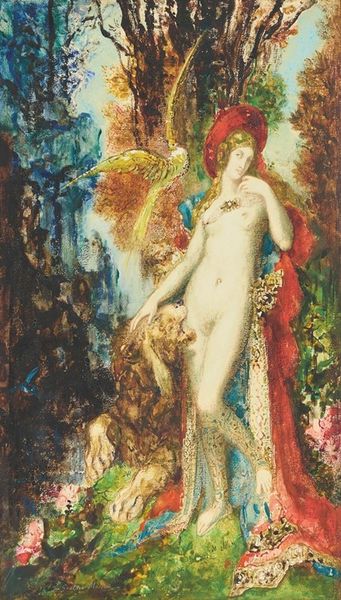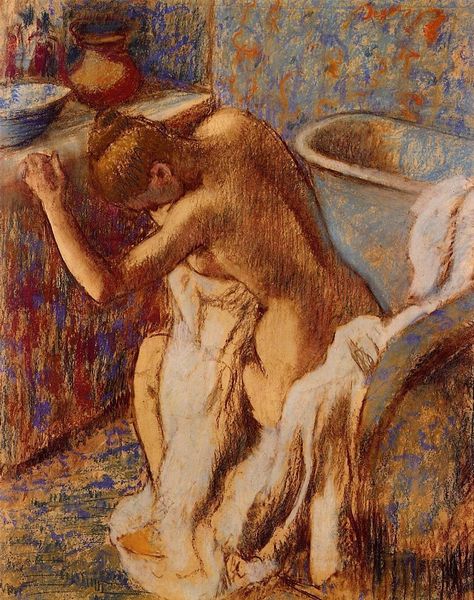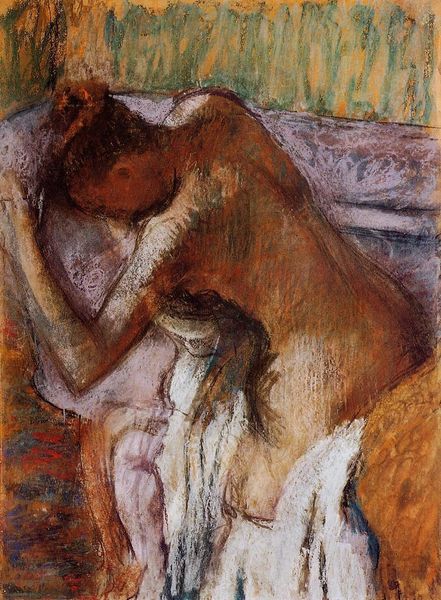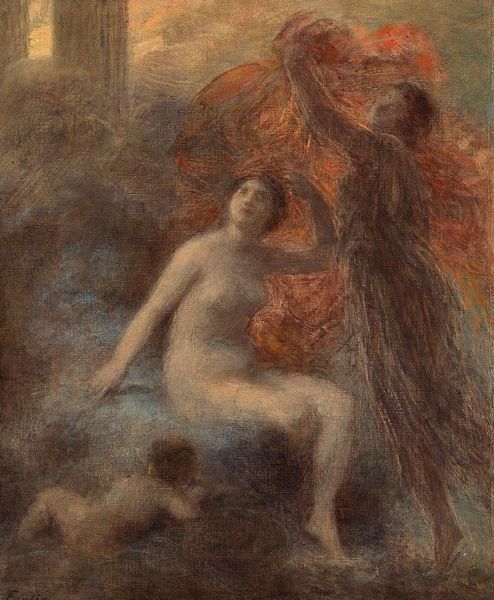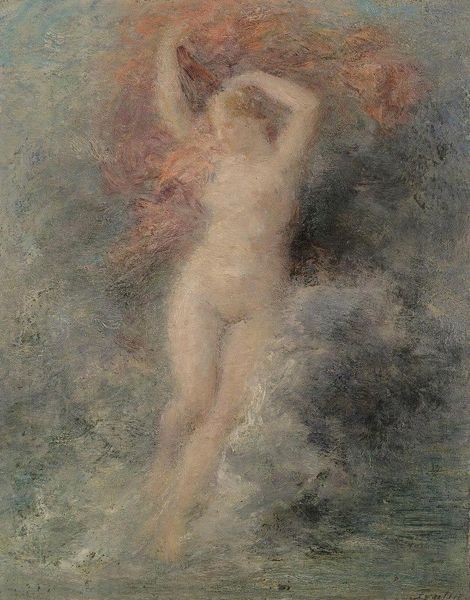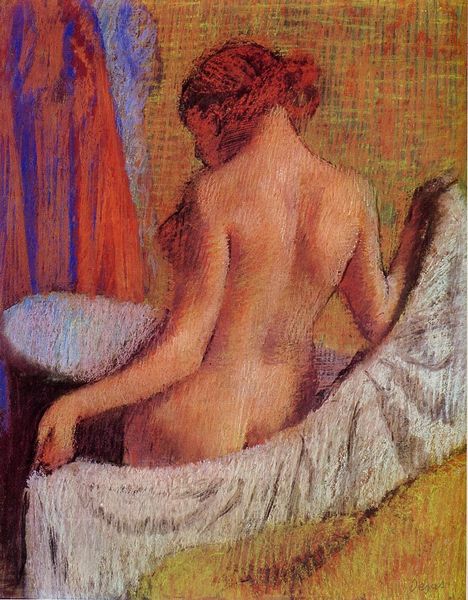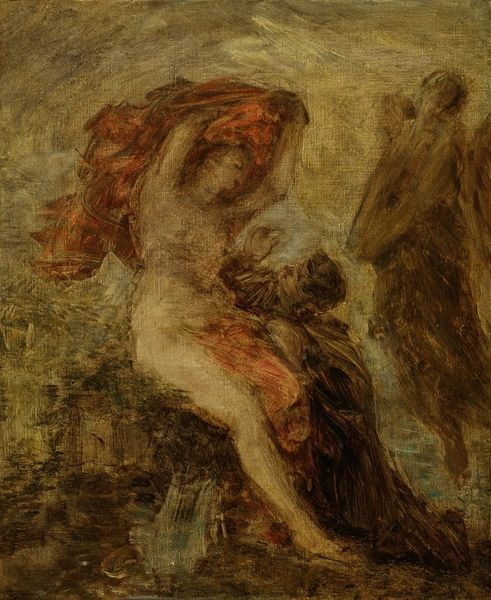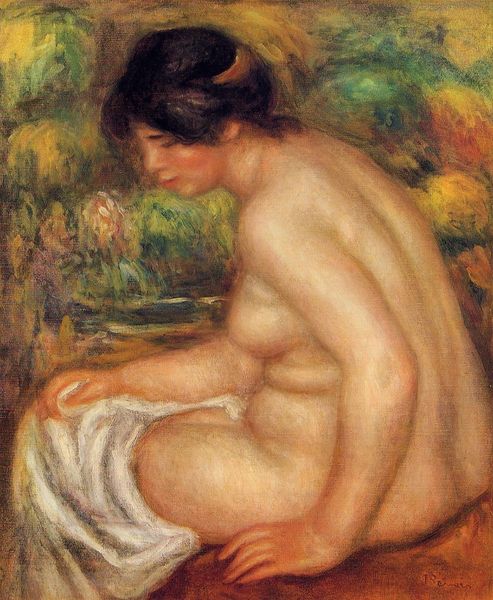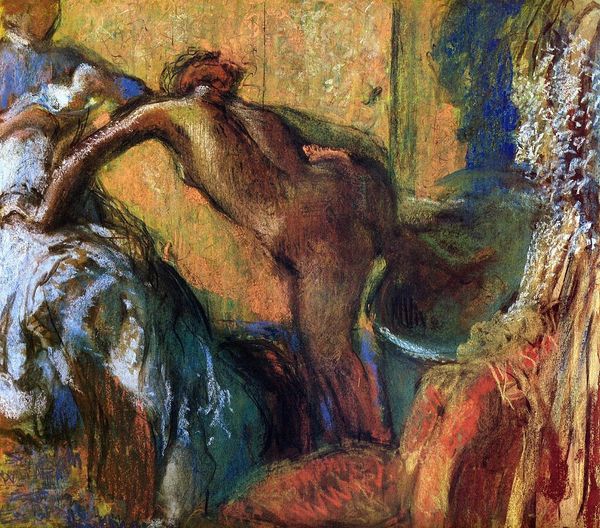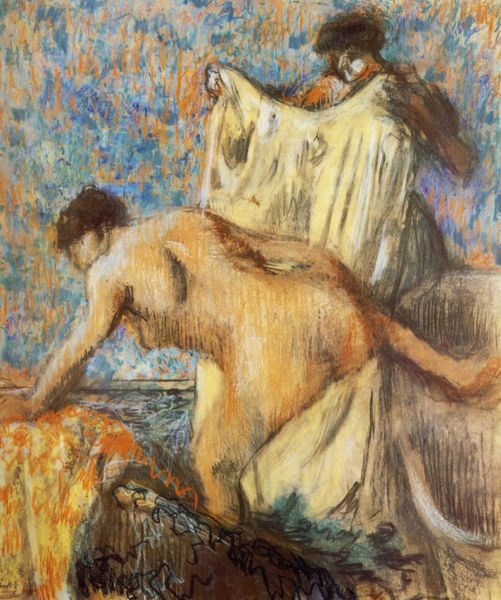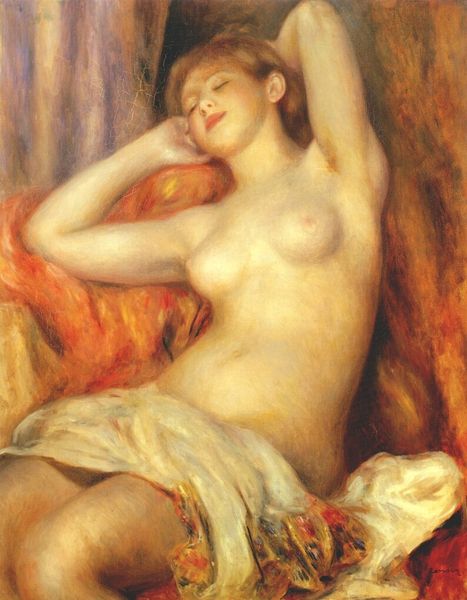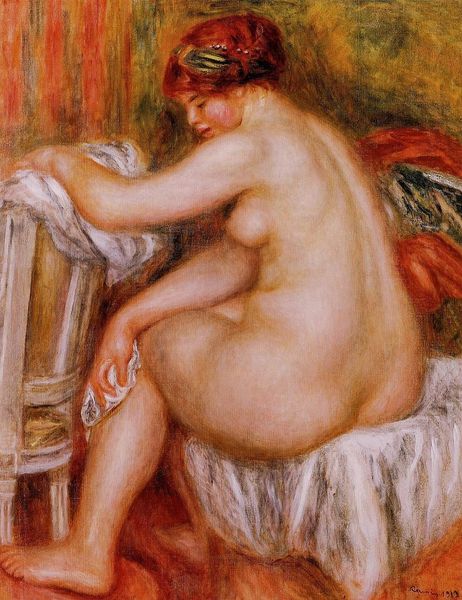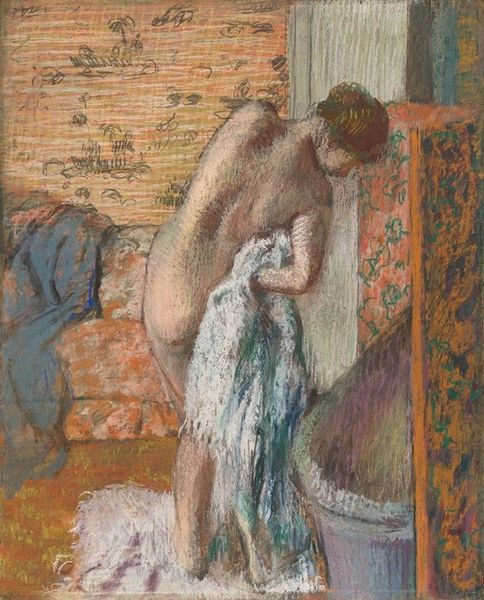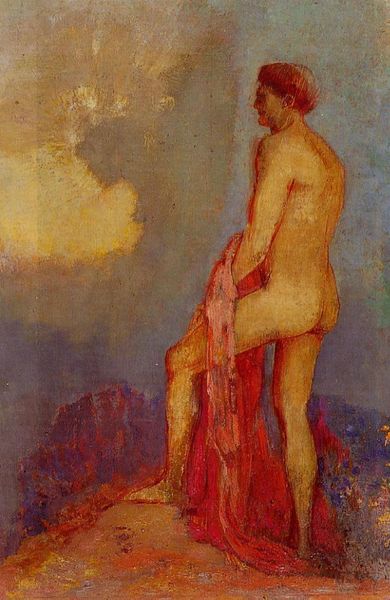
Dimensions: 51 x 51 cm
Copyright: Public domain
Editor: This is Edgar Degas's "Seated Bather" from 1899, rendered in pastel. The textures seem so tactile, the color story really pops – it has a strikingly intimate and casual feel. How do you interpret this work, seeing it through the lens of symbolism? Curator: This seemingly intimate scene speaks volumes. Degas's bathers, rendered in pastel, are hardly straightforward nudes. Consider the symbolism of water: purification, renewal. The act of bathing transcends the mundane. How does the pose, her head in her hands, strike you? Editor: It feels weary, burdened almost. Curator: Precisely. Is it simply about physical cleanliness, or something deeper? The weight of societal expectations, perhaps? The female nude throughout art history often served as an idealized form. Degas disrupts this. She is not a goddess, but a woman caught in a private moment. Observe the colours – rich reds and oranges. What feelings do they evoke? Editor: Warmth, perhaps, but also a sense of confinement given how tightly grouped the figures and interior space are together. The towels draped and clustered also appear dense. Curator: Degas wasn't just capturing an image; he was using colour and posture to explore interior states. The image, at the turn of the century, spoke to anxieties of modernity. The colours clash and dance like memories flickering just beneath our skin. The artwork encapsulates modern detachment from romantic conventions. Is the seated bather content, anxious, reflective, trapped? These subtle tensions transform a private moment into a broader social narrative. What do you think? Editor: I never thought about it that way, viewing the bather as not just a nude figure but rather a symbol of shifting social roles. That deeper context definitely adds layers to the piece, inviting even further analysis.
Comments
No comments
Be the first to comment and join the conversation on the ultimate creative platform.
